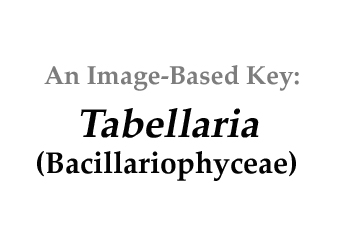|
|
||||
|
Click on images for larger format |
||||
Name derivation: |
||||
|
Greek Tabell meaning a little tablet; aria meaning connected. |
||||
Morphology: |
||||
|
Colony usually as a zig-zag pattern of cells glued together corner to corner by gelatinous cushions. Frustules are present with intercalary bands that can range from a few to many. Cells have several septa thatCells have longitudinal septa that extend across the cell, parallel to the valves, in some cases nearly dividing the cell into separate compartments. Individual cells are essentially rectangular in girdle view, with only a slight distention of the cell ends. In valve view, the middle portion of the cell is enlarged and each end is slightly swollen. |
||||
Similar genera: |
||||
|
Tetracyclus forms similar-shaped zig-zag colonies and is thought to be
closely related. Eunotia cells are also rectangular in girdle view, but glue each cell is glued together parallel to one another on each end forming a ribbon like colony. Grammatophora like Tabellaria forms zig-zag patterns attached at one corner of each cell. Grammatophora can be distinguished from Tabellaria by a curvature in the ends of each septa. The septa within the Tabellaria are straight. |
||||
Habitat: |
||||
|
A common freshwater genus epiphytic on rocks or plants with few planktonic species. Commonly found in acidic waters. |
||||
References: |
||||
|
Round, F. E., Crawford, R. M., Mann, D. G. 1990. The Diatoms. Cambridge University Press. New York, NY. |
||||










